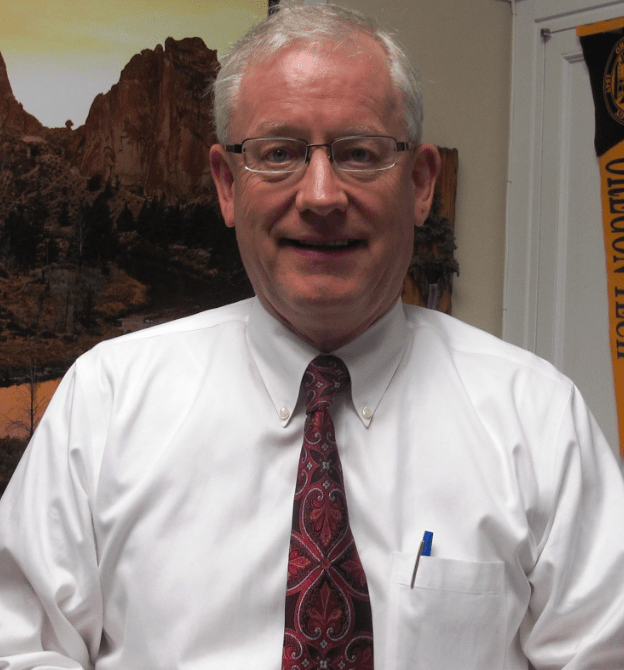July 23, 2020 by Siobhan Climer and John Irey
In August of 2019, the Federal Communications Commission (FCC) passed two new federal laws – Kari’s Law and Ray Baum’s Act. In our two-part guide to these recent laws and their impact on multi-line telephone systems (MLTS), we’ll look at the following:
- Definition of Ray Baum’s Act
- Why Is It Called Ray Baum’s Act?
- Goal and Meaning of Ray Baum’s Act
- Implementation impacts for SMBs and enterprise
In today’s Part 2, we’ll be examining Ray Baum’s Act. In Part 1, we examined Kari’s Law.
What Is Kari’s Law? Two New Federal Laws Impact Phone Systems: A Contact Center 2-Part Report
What Is Ray Baum’s Act? Explanation And Definition From The FCC
Ray Baum’s Act highlights the importance of geographic location in managing emergency situations. When first responders have access to a precise location they are better able to deliver emergency services, improving emergency outcomes and saving lives.

This Federal mandate is formalizing legislation already present in many states. Phone systems must transmit 911 calls to the appropriate PSAP with “dispachable location”. For business and enterprise organizations, this information could include room, floor, or cubicle number.
Quite simply, Ray Baum’s Act ensures first responders have access to the most accurate and up-to-date location information possible, so they are better able to deliver life-saving services.
From the FCC notification:
“Ensure that ‘dispatchable location’ is conveyed with 911 calls to dispatch centers, regardless of the technological platform used, including 911 calls from MLTS. Dispatchable location means a location delivered to the PSAP with a 911 call that consists of the validated street address of the calling party, plus additional information such as suite, apartment, or similar information necessary to adequately identify the location of the calling party.“
Note: PSAP stands for a Public Safety Answering Point (911 Center)

Ray Baum’s Act Requirements
- All MLTS must send a dispatchable location with every 911 call, along with a number to call back to if necessary.
Key to this law is this qualification: “regardless of the technological platform used”. This means on-premise fixed and wireless devices and phones connected to the MLTS will need to comply.
What Is Ray Baum’s Act Named For?
Ray Baum’s Act has two origin points.
 First, Ray Baums is an acronym: Repack Airwaves Yielding Better Access for Users of Modern Services. While that language may seem slightly tangential from the Act discussed here, it is because there is a much broader set of Federal Communications Commission (FCC) regulations that deal with a number of telecommunications statutes.
First, Ray Baums is an acronym: Repack Airwaves Yielding Better Access for Users of Modern Services. While that language may seem slightly tangential from the Act discussed here, it is because there is a much broader set of Federal Communications Commission (FCC) regulations that deal with a number of telecommunications statutes.
The Act is also named for Ray Baum, a lawyer and politician whose contributions to both state and federal regulations spanned decades. He served as the Commissioner and Chairman of the Oregon Public Utilities Commission (PUC), on the Board of Directors of the National Association of Regulatory Utility Commissioners (NARUC), and as the Chair of NARUC’s Committee on Telecommunications.
In addition, Ray Baum worked alongside the FCC on a number of telecommunications issues. He died in February 2018 after a long battle with prostate cancer. Longtime colleague U.S. Representative Greg Walden (R-Oregon) is credited with ensuring the Act was named in honor of Ray Baum.
Purpose And Implications Of Ray Baum’s Act
The purpose of Ray Baum’s Act Section 506 is simple: ensure dispatchers know where 911-callers are.
The implications – and what businesses will need to do – are numerous.
- Ensure you have updated emergency locations information for employees.
- Address both fixed and mobile services used by employees and develop an implementation plan.
- Update the MLTS.
- Test endpoints and ensure the correct emergency information is conveyed using Mindsight’s test assistance services.
Ray Baum’s Act goes into effect for fixed-line operators on January 6, 2021 and for mobile operators on January 6, 2022.

Implementation Impacts On MLTS – What You Need To Do
Updating your multi-line telephone systems (MLTS) is easy.
- Cisco Emergency Responder (CER) is purpose built for scenarios like this. CER can be deployed to send the caller’s location to the PSAP when 911 is dialed, along with the caller’s phone number.
- For premise based non-fixed devices, the access point the device is connected to can potentially be used as the location.
- For remote users, Red Sky can be used to have the 911 caller report their location before being connected to the appropriate 911 center.

Do You Have Cisco Emergency Responder (CER)?
Mindsight can perform an assessment of a CER environment. In this assessment, our teams:
- Verify current setup functionality
- Report on zone granularity
- Perform functional test of 911 calling capabilities
- Assess internal alert systems
CER assessments remove liability for your organization and promote the safety of callers on your premises.
No CER?
If you do not already have CER, now is the time to deploy it. CER supports common sense safety at your facilities.
Contact our teams now to implement CER and come into compliance with Ray Baum’s Act.

How Do You Know If Ray Baum’s Act Impacts You?
Understanding your MLTS is important; if you are not sure if Ray Baum’s Act impacts your systems, contact a Mindsight representative. We can help you determine if an assessment or reconfiguration is needed.
Help protect your employees and colleagues by ensuring dispatchers know where to send help and first responders get to 911-callers as fast as possible.
Like what you read?
Contact us today to understand how Ray Baum’s Act impacts your contact center systems.
About Mindsight
Mindsight is industry recognized for delivering secure IT solutions and thought leadership that address your infrastructure and communications needs. Our engineers are expert level only – and they’re known as the most respected and valued engineering team based in Chicago, serving emerging to enterprise organizations around the globe. That’s why clients trust Mindsight as an extension of their IT team.
Visit us at http://www.gomindsight.com.
About The Authors
John Irey is a Principal Consultant at Mindsight focused on Cisco platforms. With nearly 20 years of experience in information technology, John has helped businesses of every size optimize the technology powering the contact center. He seeks to provide a consultative voice to contact center leaders and continues to focus on emerging technology, such as machine learning and artificial intelligence.
Siobhan Climer writes about technology trends in education, healthcare, and business. With over a decade of experience communicating complex concepts around everything from cybersecurity to neuroscience, Siobhan is an expert at breaking down technical and scientific principles so that everyone takes away valuable insights. When she’s not writing tech, she’s reading and writing fantasy, hiking, and exploring the world with her twin daughters. Find her on twitter @techtalksio.
NIST Privacy Framework Version 1.0 Standardizes Data Privacy: A Cybersecurity Report
